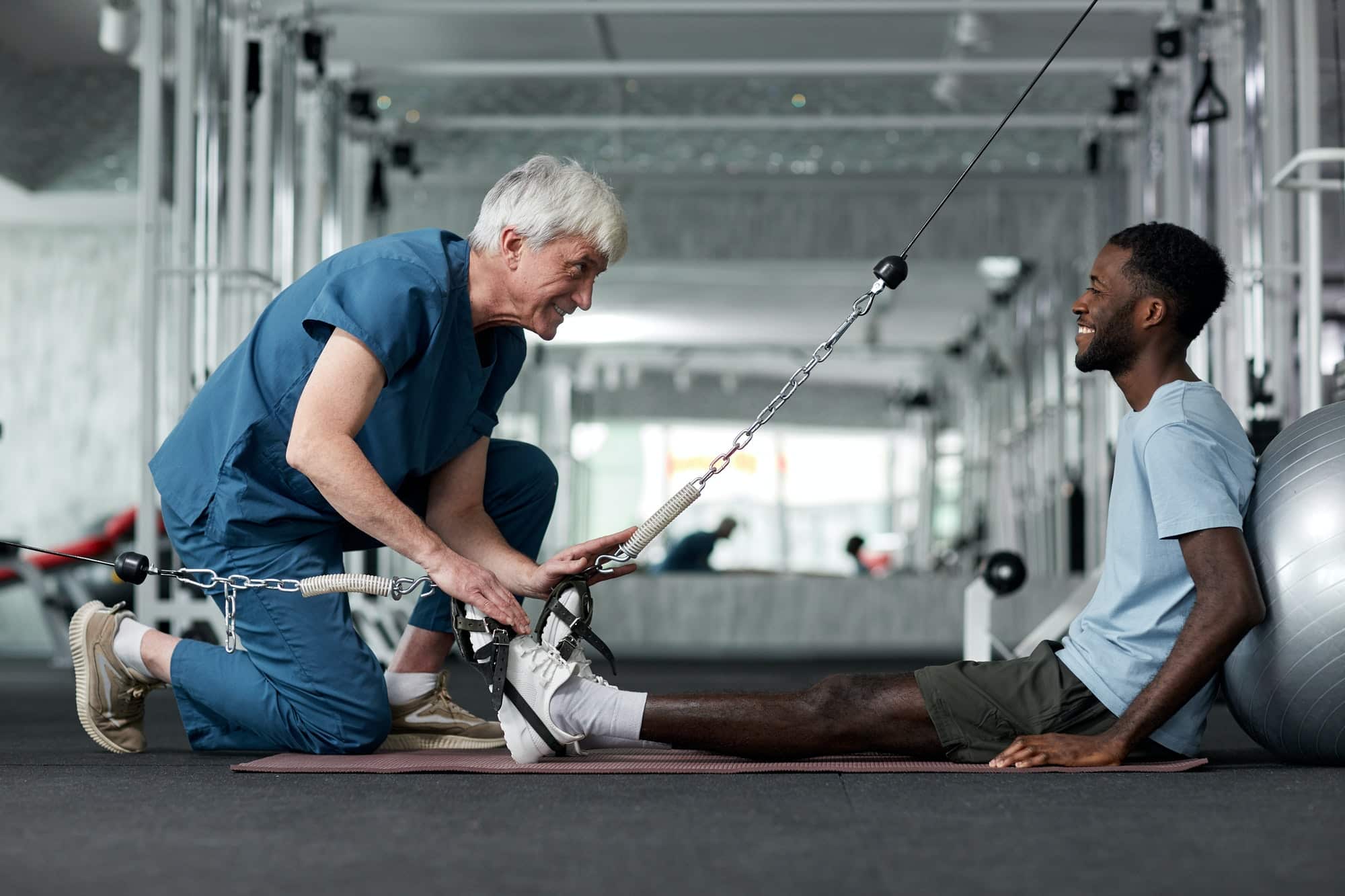What Are the Best Approaches to Injury Rehabilitation for Competitive Climbers?

In the world of competitive climbing, injuries are not only common but often inevitable. Whether you practice bouldering, lead climbing, or any other form of this adrenaline-fueled sport, the intensity of the training and the demands it places on your body can lead to various types of pain and injuries.
The consequences of these injuries can be dire, potentially impacting your performance and turning your passion into a source of discomfort. As a scholar of climbing injuries and their rehabilitation, I’m here to share insights into the best ways to recover from these setbacks. In this article, we will explore effective methods of injury rehabilitation, strategies for optimal recovery, and injury prevention tactics that can help you safely get back on the rock.
Topic to read : How to Design a Resistance Training Program for Female Sprinters?
Understanding Climbing Injuries
Before diving into the solutions, it’s essential to understand the problem. The unique nature of climbing puts a significant strain on specific body parts, leading to a distinct pattern of injuries.
Climbing-specific injuries often involve areas of the body that are excessively used or strained during climbs. The fingers are especially vulnerable, with injuries ranging from mild sprains to serious ligament tears. Other common climbing injuries involve the shoulders, elbows, and knees.
Also to discover : What’s the Effect of Sleep Extension on Athletic Performance in Collegiate Swimmers?
The severity of these injuries can vary greatly. Some might require a few days of rest, while others may need extensive rehabilitation. Understanding your injury and its severity is the first step towards successful recovery.
Rehabilitation Strategies for Climbers
Once you’ve accepted the reality of your injury, it’s time to embark on the path of recovery. Rehabilitation strategies for climbers must consider the nature of the sport, the specific injury, and the individual’s physical capabilities.
One of the core components of any rehabilitation program should be strength training. It can help restore muscle balance, improve joint stability, and enhance overall performance. However, it’s crucial to remember that every body is different, and therefore, the intensity and type of strength training should be tailored to your individual needs and capabilities.
Another important aspect of rehabilitation is physical therapy. It can help manage pain, improve mobility and flexibility, and promote healing. Physical therapists often use a combination of manual therapy, exercises, and educational advice to help climbers recover from their injuries.
The Role of Rest and Recovery
Rest is a critical aspect of injury rehabilitation that is often overlooked by climbers. A common mistake is to rush back into training or climbing before the body has had enough time to heal completely.
Rest is when the body repairs and rebuilds damaged tissues, leading to recovery. Ignoring this key aspect of rehabilitation can lead to re-injury or even chronic issues.
It’s also important to understand that rest is not synonymous with inactivity. You should engage in low-intensity activities and exercises that don’t strain your injured body part. This helps maintain overall fitness levels without hampering the healing process.
Preventive Measures for Climbing Injuries
While rehabilitation is crucial for recovery, prevention is always better than cure. Incorporating preventive measures into your training regime can significantly reduce the risk of injuries.
One such measure is warming up before each climbing session. A warmup routine increases blood flow to the muscles, preparing your body for the intense activity ahead.
Another preventive measure is regular conditioning exercises. These exercises help strengthen the muscles used in climbing and improve their endurance, reducing the risk of injury.
Lastly, investing in good-quality climbing gear can also help prevent injuries. Gloves can protect your fingers, while a good pair of climbing shoes can provide better grip and reduce the risk of falls.
Incorporating Mindfulness in Climbing Training
Injuries are not just physical; they can have a psychological impact as well. The fear of re-injury can lead to anxiety and affect performance.
This is where mindfulness comes in. Mindfulness involves being present in the moment, focusing on the task at hand rather than worrying about potential outcomes.
Practicing mindfulness can help climbers overcome the fear of re-injury, improve their focus, and enhance performance. It can be incorporated into your climbing training through practices such as meditation and yoga.
Injury rehabilitation for competitive climbers is a multifaceted and individualized process. It combines different approaches – strength training, physical therapy, rest, preventive measures, and mindfulness, to help you get back to climbing safely and confidently. Remember, your body is your best guide. Listen to it, respect its limits, and give it the care it needs.
The Significance of Nutrition in Injury Rehabilitation
When discussing rehabilitation approaches, one cannot overlook the significance of nutrition. Proper nutrition plays a crucial role in the body’s healing process. A balanced diet rich in proteins, vitamins, and minerals can complement physical therapy and strength training, accelerating recovery from climbing injuries.
Climbers, especially those in high-intensity sports like lead climbing and rock climbing, need a diet designed to meet their specific nutritional requirements. It should supply the necessary energy for their activities, support muscle repair, and enhance the body’s immune response to injuries.
Research published on Google Scholar suggests that certain nutrients can significantly aid injury rehabilitation. For example, protein is essential to repair damaged tissues and build new ones. Meanwhile, Vitamin C, found in citrus fruits and leafy greens, promotes collagen production, which is crucial for healing wounds and injuries.
Iron-rich foods like spinach and red meat are important, too, as they help form hemoglobin, a protein that carries oxygen to damaged tissues, enhancing the healing process. And don’t forget about hydration. Water plays a vital role in all the body’s processes, including recovery from injuries.
Nutrition is a key component of injury rehabilitation not only for elite climbers but for climbers at all levels. It’s important to consult a nutritionist or dietitian who understands the specific demands of climbing; they can help design a diet plan that fulfills your nutritional needs and complements your rehabilitation efforts.
The Influence of Climbing Techniques on Injury Prevention
Apart from strength training and nutrition, refining climbing techniques can also contribute significantly to injury prevention. As any experienced climber knows, climbing is as much a mental sport as it is a physical one. The way you approach a problem, the sequence of movements you choose, and your hang time on the rock can all play a significant role in preventing injuries.
Climbers, particularly those new to the sport, often rely on their upper body strength to pull themselves up the rock. However, this can lead to excessive strain on the fingers, shoulders, and elbows, leading to injuries. Experts recommend focusing more on lower body strength and using the legs and core to push upward, reducing the load on the upper body.
Another key aspect is grip strength. A strong grip not only enhances climbing performance but also reduces the risk of finger injuries. Incorporating grip-strengthening exercises into your strength training routine can help improve your grip and prevent climbing-specific injuries.
Lastly, body mass plays a significant role in climbing injuries. A higher body mass means more weight for your muscles, joints, and tendons to support, increasing the risk of injury. Maintaining a healthy weight can reduce this risk and improve your overall climbing performance.
Conclusion
Injury rehabilitation for competitive climbers is a comprehensive process that encompasses various elements, including understanding climbing injuries, undertaking appropriate strength training, ensuring adequate rest and recovery, and implementing effective injury prevention measures.
Incorporating mindfulness into climbing training can help manage the psychological impact of injuries and enhance climbing performance. Nutrition also plays a crucial role in recovery from injuries; a balanced diet can accelerate the healing process and boost your climbing performance.
Refining climbing techniques, focusing on lower body strength, improving grip strength, and maintaining a healthy body mass can significantly reduce the risk of injuries.
In conclusion, every climber’s journey to recovery is unique. It’s essential to listen to your body and tailor your rehabilitation process to your specific needs and capabilities. Remember, the ultimate goal is not just to get back on the rock but to do so safely and confidently. Whether you’re researching articles on PubMed or Crossref Google, or consulting with sports med professionals, always strive to find the best approach for your personal journey to recovery.
